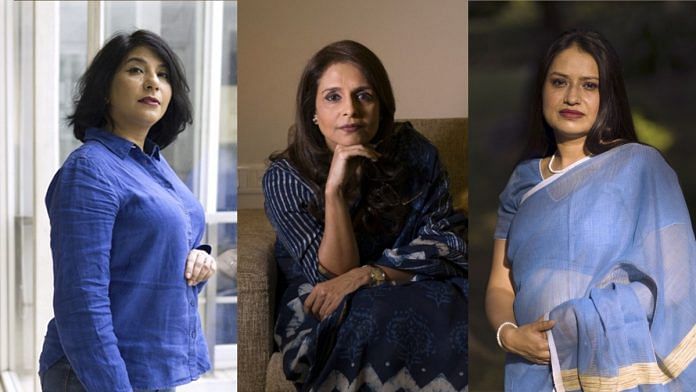New Delhi: The three lawyers who resolved India’s largest bankruptcy case last year are using their elevated professional standing to address a different problem: not enough women in the bar.
The protracted legal tangle between Essar Steel India Ltd. and ArcelorMittal, laid to rest last year, was India’s largest bankruptcy case by the amount of debt owed and recovered — a whopping $5.6 billion. Acting for the lenders was Misha, who goes by one name. Ruby Ahuja drove ArcelorMittal to acquire the bankrupt steel mill, and Shally Bhasin represented some vendors and creditors seeking dues from Essar Steel.
The landmark final ruling ended tycoon Lakshmi Mittal’s long wait to enter the world’s second-biggest steel market. It also empowered Indian banks with the legal authority to set the terms of the distribution of recovered money between financial and operational creditors for future cases.
The three women represent a visible change in the country’s legal landscape but they are also reminders of how much more needs to change in this nation of 1.3 billion. India has seen women in top political offices — as prime minister and president and regional leaders — and in top corporate jobs and yet the nation remains deeply patriarchal in its attitudes.
Even with the most generous count, only 10% of India’s lawyers are women, and the most high-profile among them tend to practice in Delhi and Mumbai. That meager pipeline has led to a shortage of women in the judiciary. Among the 122 economies with at least one female justice in higher judiciary, India has the smallest share of women on the bench, according to a World Bank study.
“Women bring a different kind of working style and leadership skills,” said Misha, who goes by only one name to strike a blow against caste, another deep-rooted inequity in India. Last names often denote where a person stands on Hinduism’s traditional hierarchy. “If women are doing the good work why are they not there? It needs to reflect in them being there.”
Until 1921, when the first female lawyer was allowed to practice in India, women did not fit the description of the term ‘person’ as defined in the colonial era laws that guided legal practice. It was only in 1989, 42 years after independence, that a woman became a judge in India’s top court, and in 2009 that a woman represented the federal government in courts.
“I want to see more women in the profession so that there is parity as this is a male dominated profession,” said Ahuja. “Once women join bar the chances of having more women in judiciary also increase.”
Also read: SC collegium willing, this Karnataka judge could become first woman Chief Justice of India
Inner circle
In 2005, when Misha graduated law school, hiring firms on campus told her that she would not be a good fit in the rough and tumble of litigation in Delhi courts. Today she leads some of the country’s biggest lenders and companies in 10 of the top 12 cases that were pushed into bankruptcy in 2017 in the central bank’s effort to clean up $190 billion of bad loans.
When she started out in the 1990s Ahuja remembers being told the work she was choosing wasn’t suitable for her gender — a euphemism implying the rigors would get in the way of a family life and marriage. Women were encouraged to practice family law. “Tax law is still a very male-centered world,” Ahuja said.
But the highly visible trial has upped their profile.
“After the Essar case, I can clearly feel that there is recognition, in the banking industry specially,” Misha said, adding that courtroom success, awards and the top ranking that’s come her way in the last three years have been heartening. “I suddenly felt like I am part of an invisible inner circle.”
Also read: Hathras, Balrampur reminders of risk of violence disadvantaged women face, says UN
Women judges
For all the success that women like Misha, Ahuja, and Bhasin have found in the last few years, finding female role models in the top echelons of India’s legal system is still hard.
Despite a sanctioned strength of 33 judges, so far India has only ever had maximum of three female justices in the top court at one time and only eight women have been judges in the top court. As of March 2018, there were 73 women judges in the provincial high courts, or 10.89% of the working strength, India’s federal law ministry informed a parliamentary panel last year.
For more women to become judges, India will first require more women lawyers.
The number of women lawyers in district courts is still poor. A study published last year by Vidhi Centre for Legal Policy, a New Delhi-based think tank, found that around 15% or over 100 district court complexes across the country did not even have restrooms for women.
The federal government has said it has no plans to reserve seats for women in the judiciary.
“India has, even by the most optimistic data source, only about 10% of female lawyers despite having one of the largest legal professions in the world,” said Swethaa S. Ballakrishnen, Assistant Professor of Law at University of California, Irvine and co-director of the UCI Law Center for Empirical Research on the Legal Profession. “Having more women in positions of power like being officers in court, and creating those conditions by whatever means necessary including thoughtful reservations, is the only way we can implement sustainable long term diversity.”- Bloomberg
Also read: Indu Malhotra: India’s 7th woman Supreme Court Judge in 70 years






